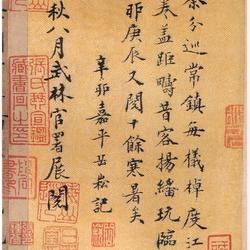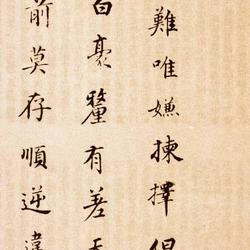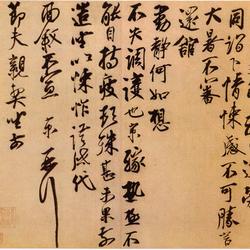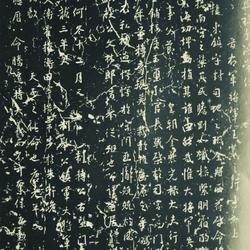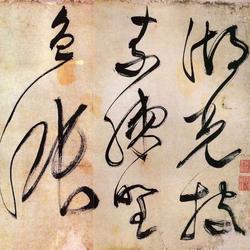The full name of "The Inscription on the Brick Pagoda of the King of the Great Tang Dynasty" is the name of the stele in regular script of the Tang Dynasty. Its post is written in the official script and was inscribed on October 12, the third year of Emperor Xianqing of the Tang Dynasty (658). Seventeen lines, seventeen characters, written by Shangguan Lingzhi and written by the unknown calligrapher Jingke. Unearthed in Wanli of the Ming Dynasty, 3 bricks had been cracked, followed by 5 and 7 cracks. By the time of Daoguang, two of them were lost, and only five small pieces remain today. Therefore, the complete rubbing is extremely rare. This is the full text of the first rubbing, which was once collected by Matsushita Lu of Wuxian County. Qi Dynasty, later transferred to Wu Hufan's postscript, and Chu Deyi's inscription. The dates of birth and death of Jing Ke are unknown, and it is unknown where he was a scholar in the mountains. Neither the Bao Ke Cong Bian nor the Bao Ke Lei Bian has a name, but he lived during the early Tang Dynasty. Chu Suiliang's calligraphy was in its heyday, so this inscription written by Jing Ke was inevitably influenced by them. Wang Shu of the Qing Dynasty wrote in his "Xuzhou Inscription and Postscript" "The name of Jingke did not appear at that time, but his calligraphy was particularly thin and vigorous, which is similar to that of Chu Gong. It is known that there were many people who could calligraphy in the Tang Dynasty, so it was inevitable that they would cover their ears for the giant prince." Qian Yong said: "If you get a piece of paper with just a word, you still treasure it but don't put it away. Because of its elegance and method, scholars have come to know it between Europe and Chu, so it became a famous monument. It can be seen that the ancients have methods to use with their pens." Qian Yong's " The postscript of Wang Jushi's Brick Pagoda Inscription says: "The recent copies of "Wang Jushi's Brick Pagoda Inscription" are either fragments or reprinted versions. There are very few that have been so refined and perfected. I have said that calligraphers in the early Tang Dynasty had different faces. This inscription is able to take charge of both Ouyang Xunyi and Zhongling (Chu Suiliang). It is long and unique, which is why it is so wonderful." Looking at this inscription now, the regular script is exquisite, the posture is handsome and graceful, and the wind and spirit are tall and graceful. Ou and Chu were both masters of regular script and able to come up with their own ideas. They were undoubtedly the best among the regular scripts of the Tang Dynasty. Zhao Zhichen's postscript said: "Jingke Shuzhi competes with Ou, Yu, Chu and Xue. Those who practice regular script should be regarded as models." The inscription on this pagoda The book was buried under the loess for more than nine hundred years and was not unearthed until the Wanli period of the Ming Dynasty. And because the stone is very thin, it will be damaged and cracked soon after it is unearthed. It will first break into two, then into three, then into four, and finally into seven. Therefore, there are very few good rubbings passed down from generation to generation. What's more, the calligraphy at this time is graceful and neat, and is deeply loved by the world. Therefore, the calligraphy is imitated over and over again, and even the masters can almost falsify the original.
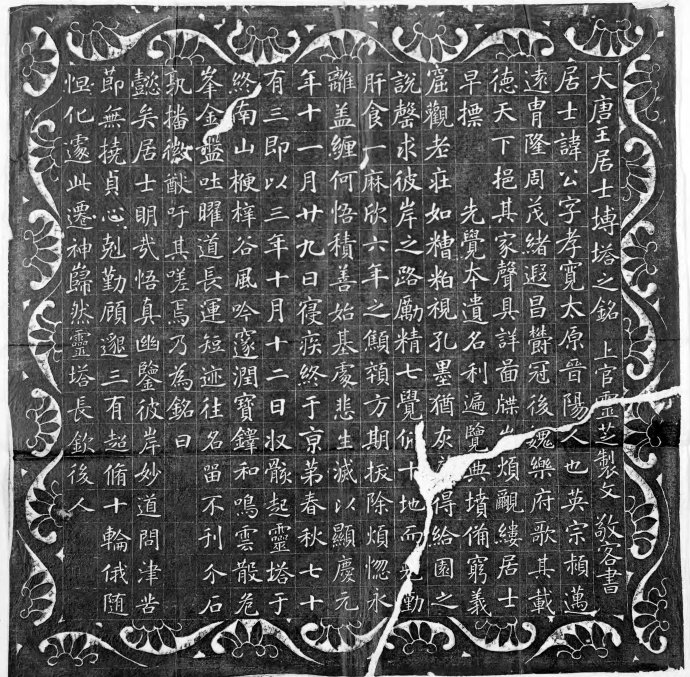
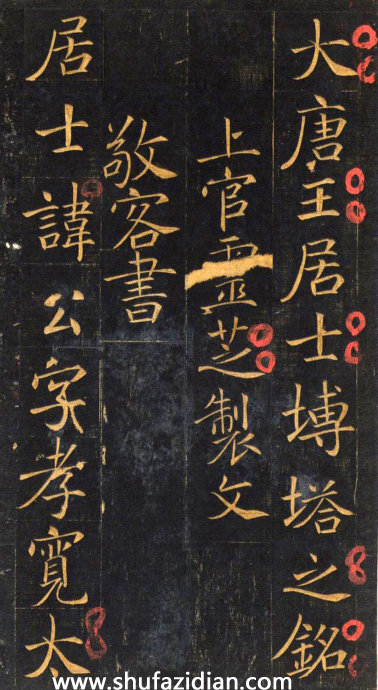
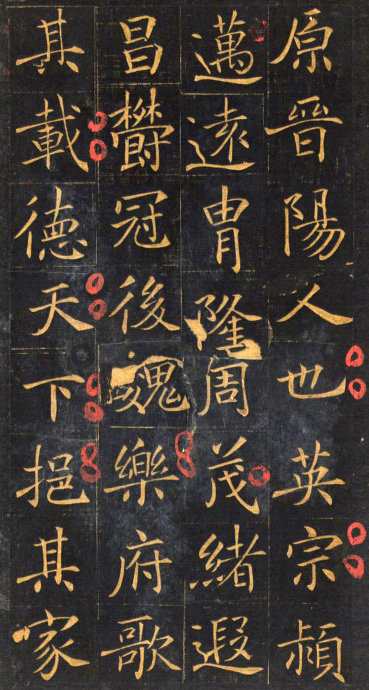
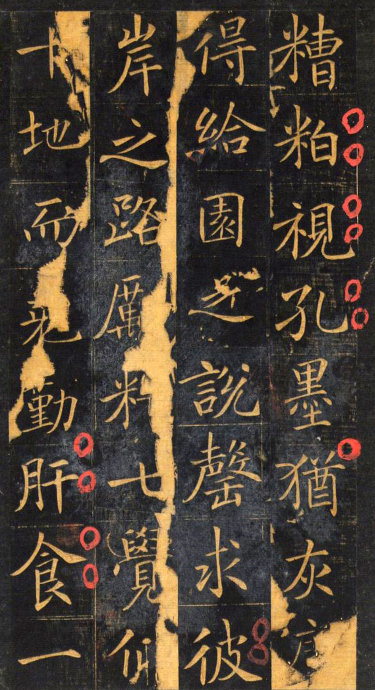
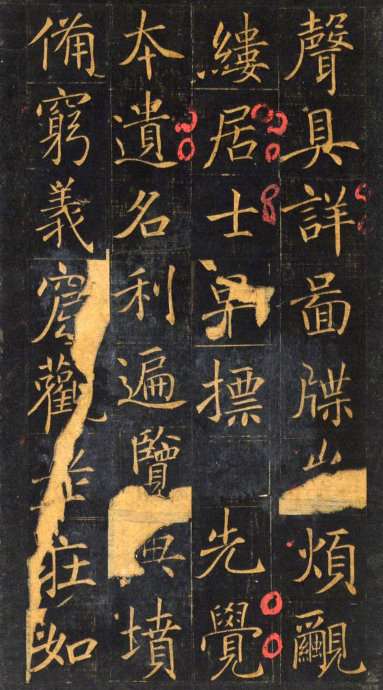
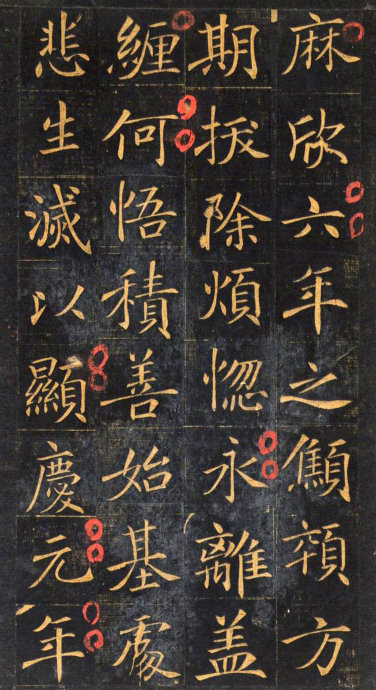
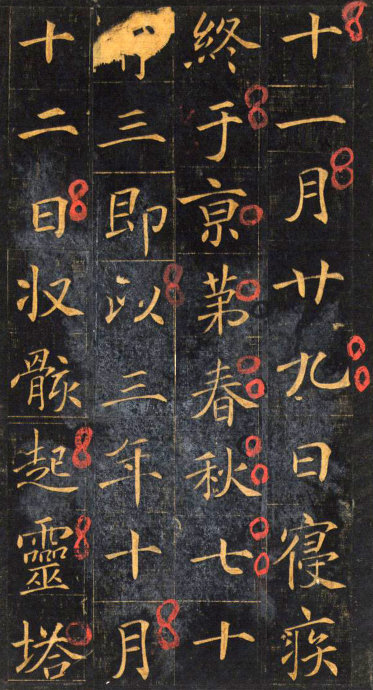
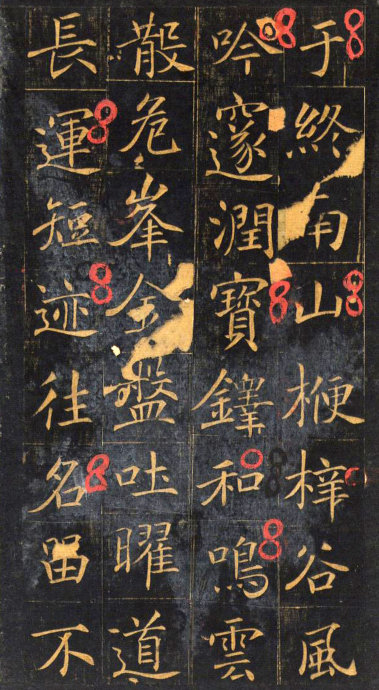
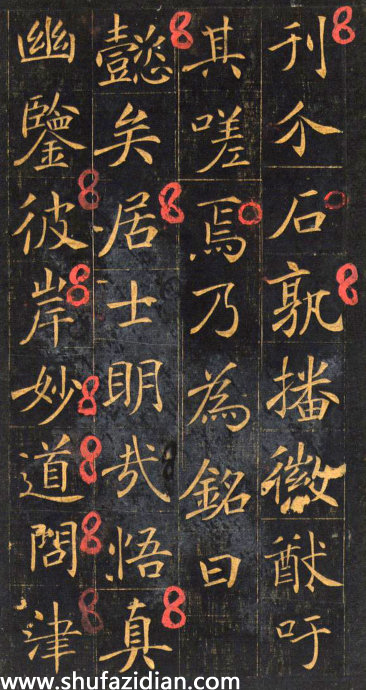
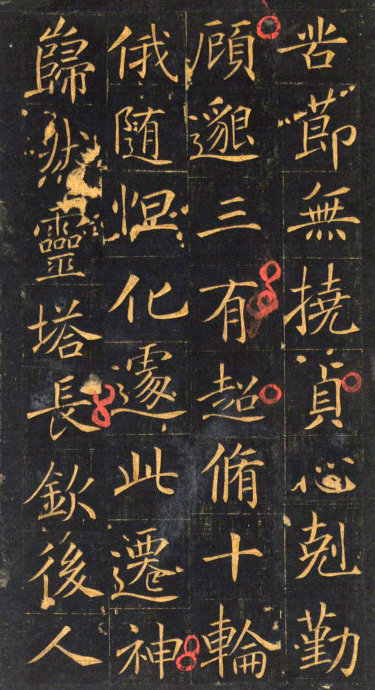
After the epitaph calligraphy of the Tang Dynasty entered the Gaozong Dynasty, it gradually became more graceful and smooth, breaking away from the legacy of the Sui Dynasty and incorporating the new style of the Tang Dynasty. It was more elegant, broad, and rich. The calligraphy of this book is beautiful and elegant, and it was highly praised by Wang Shu, Mao Fengzhi and Ye Changchi in the Qing Dynasty. "Xuzhou Inscriptions and Postscripts" says: "His calligraphy is particularly thin and vigorous, similar to that of Chu Gong." "Yu Shi" commented that "nothing is more precious in this world than the Brick Pagoda Inscription". Kang Youwei's "Guangyizhou Shuangji·Qianlu 26th" says: "In modern times, the Zhao style is round, beautiful and quick to achieve. However, the Zhao style is not square, so Xian and Tong later often wrote the "Brick Pagoda Inscription", Because of its roundness, strength and smoothness, it is easy to write characters."
The calligraphy style of "Brick Pagoda Inscription" is graceful, smooth and strong, and it is a masterpiece of Tang regular script. It can cultivate the beauty of calligraphy; its broad structure and rigorous glyphs are also conducive to the establishment of regular script consciousness; moreover, it can cultivate the beauty of calligraphy. The important thing is that although the style of this book is mature, its personality is not strong, making it easier for casual students to learn further.

